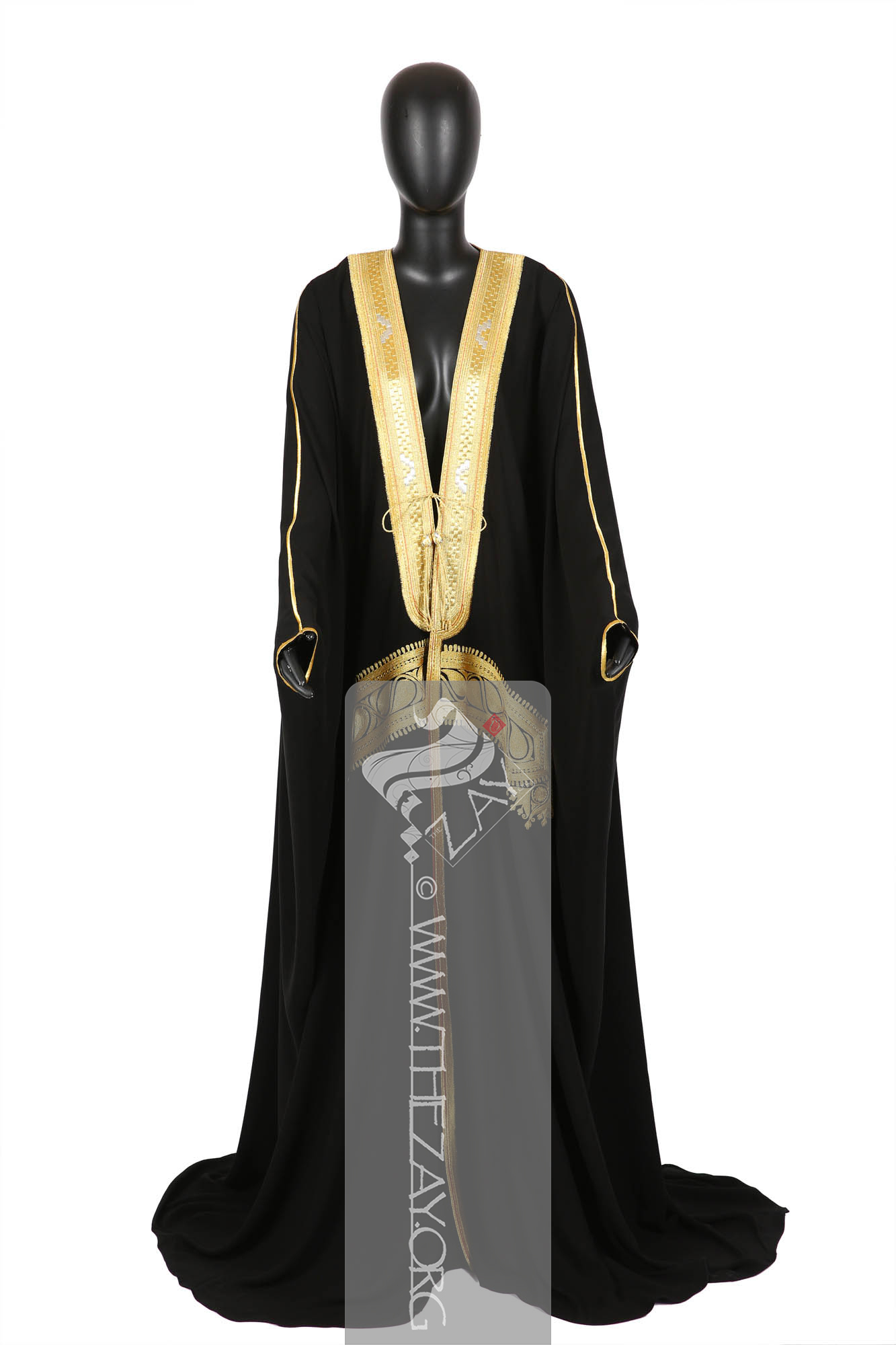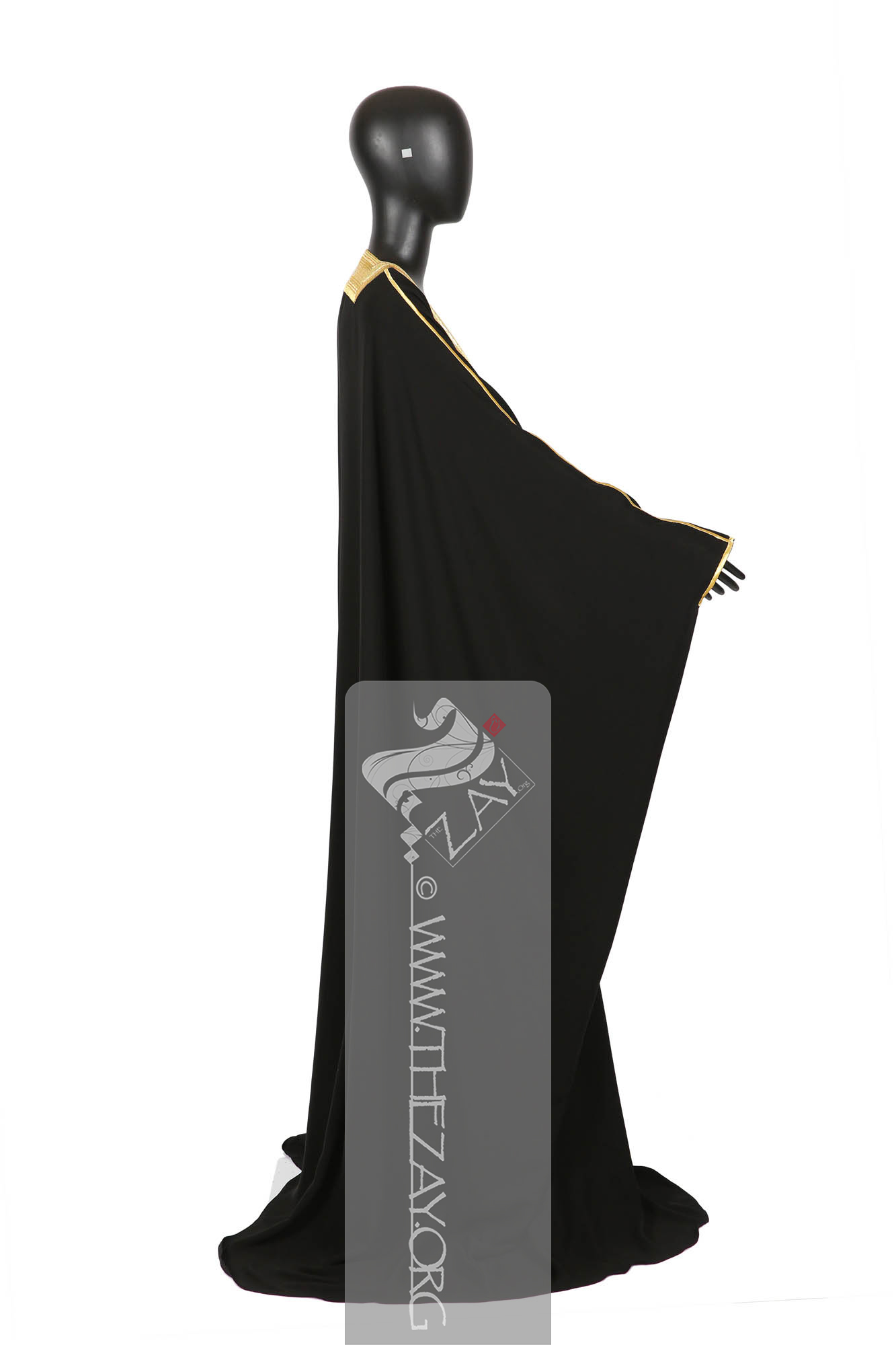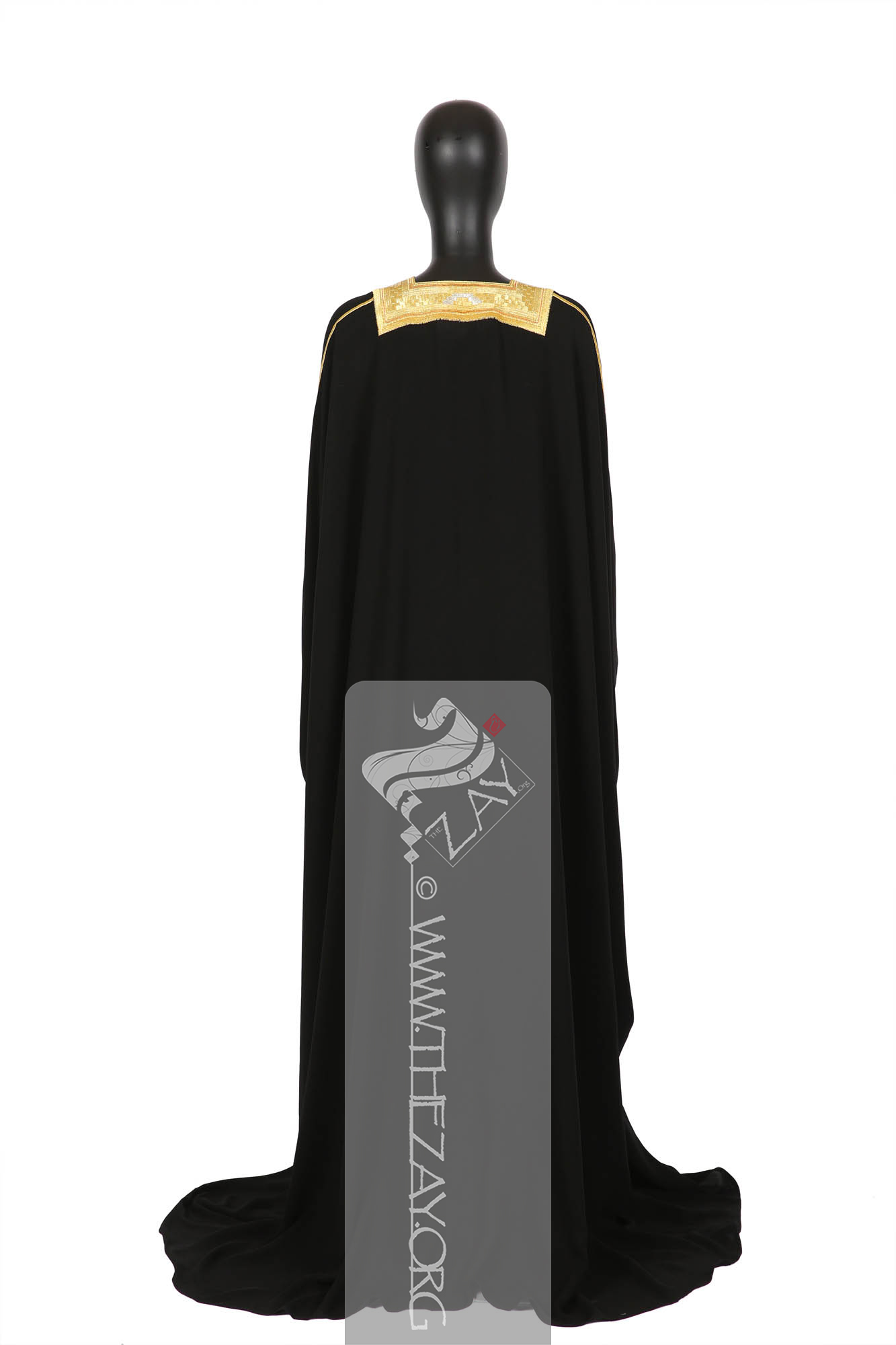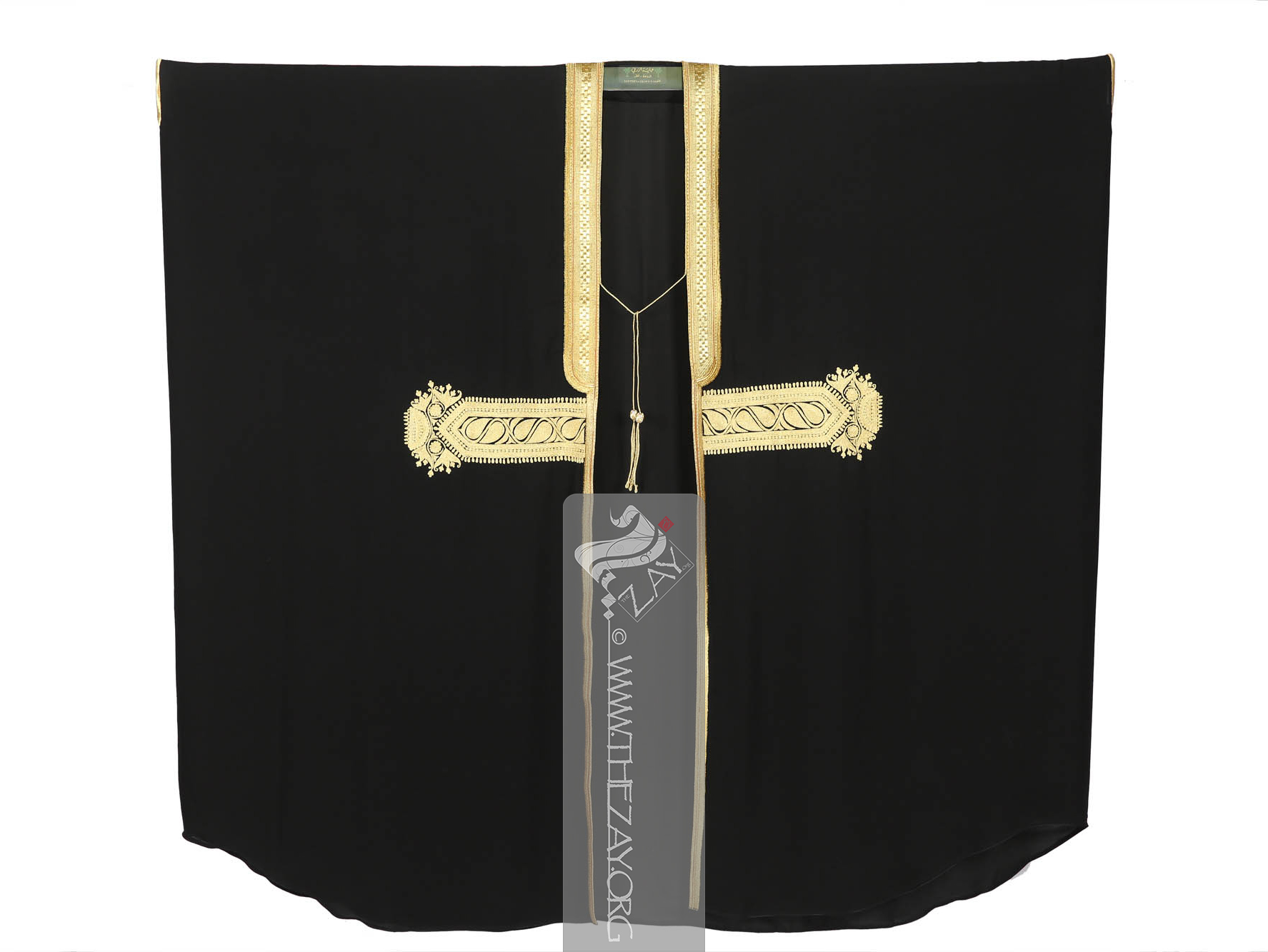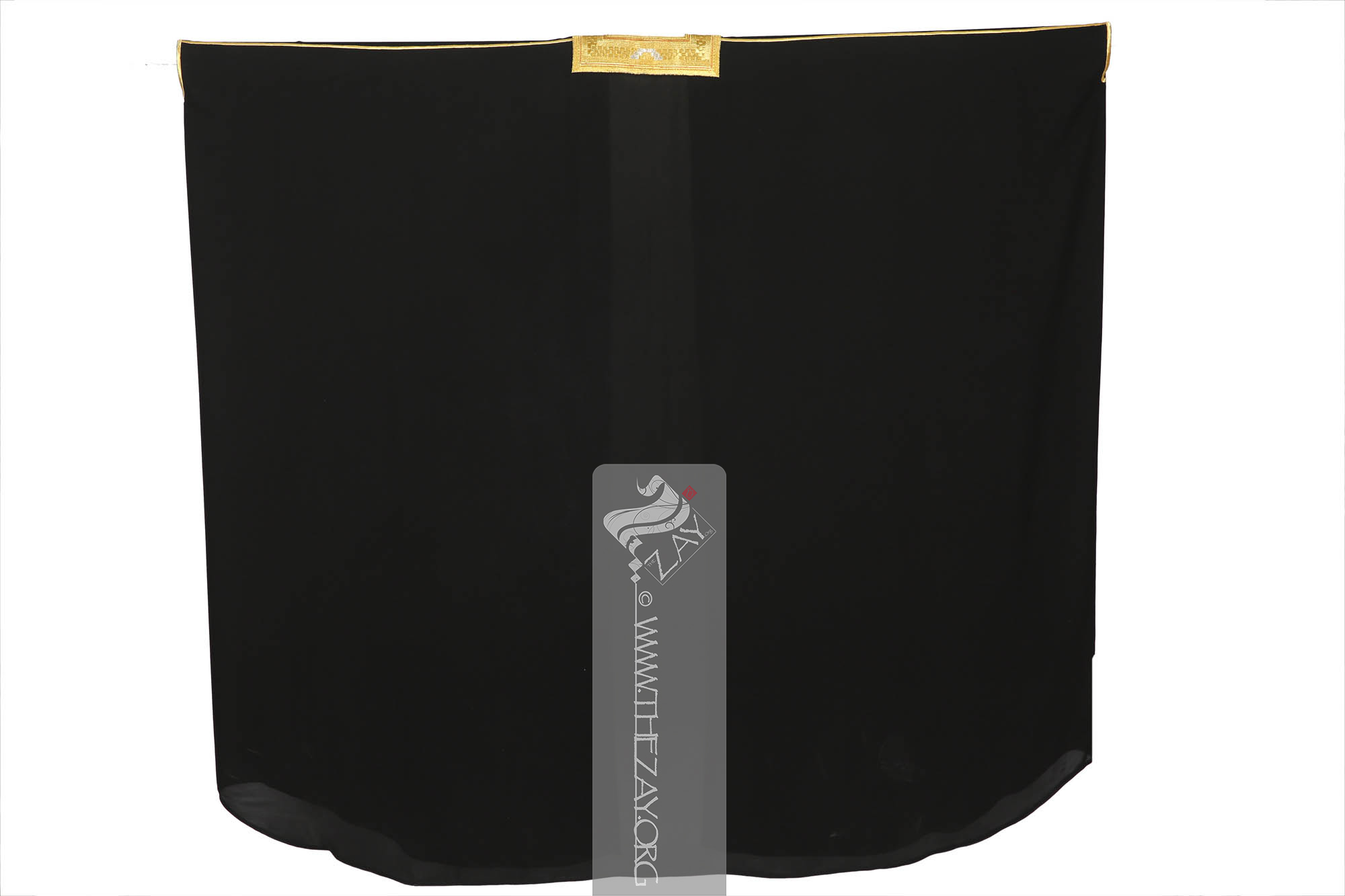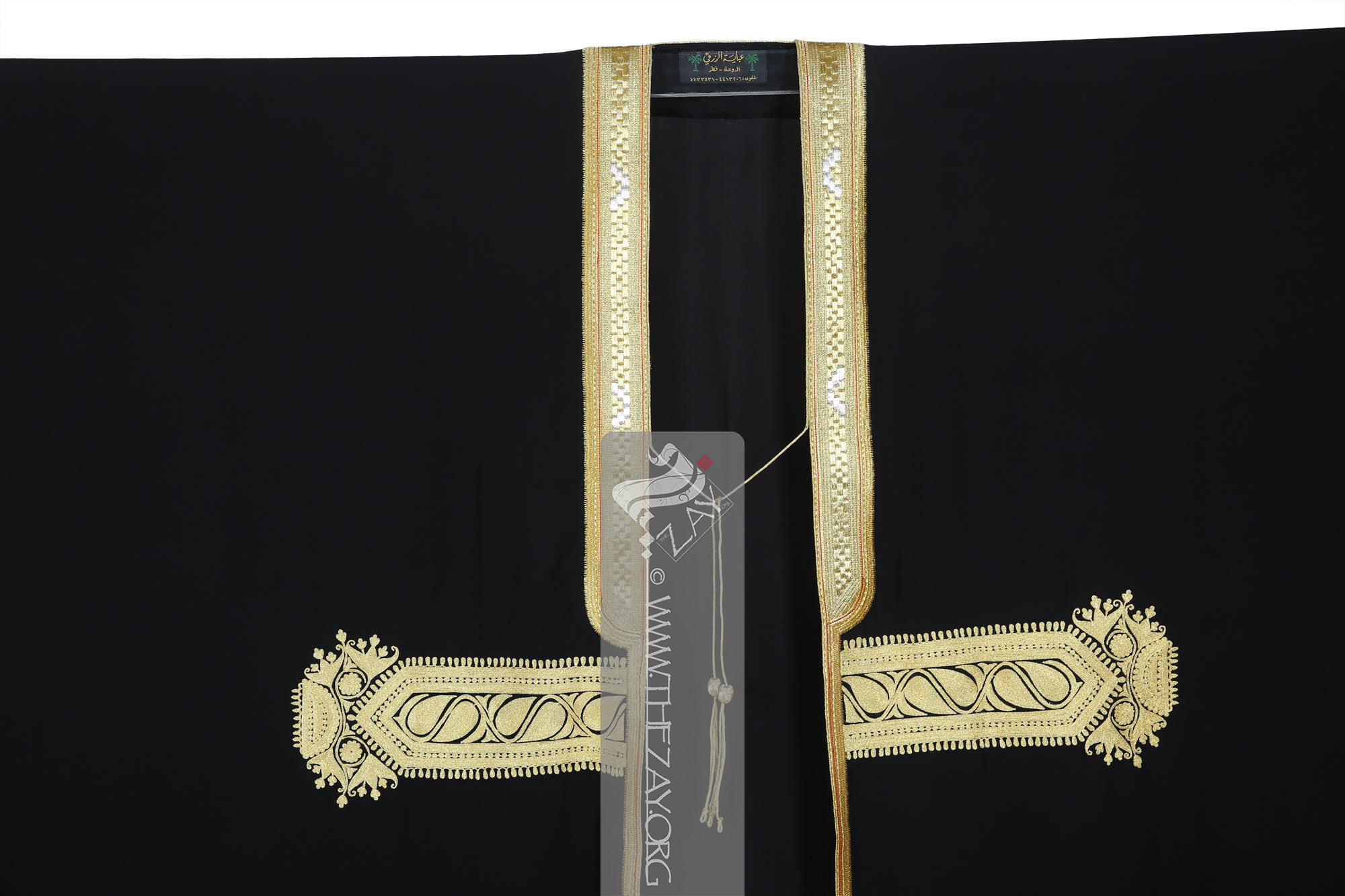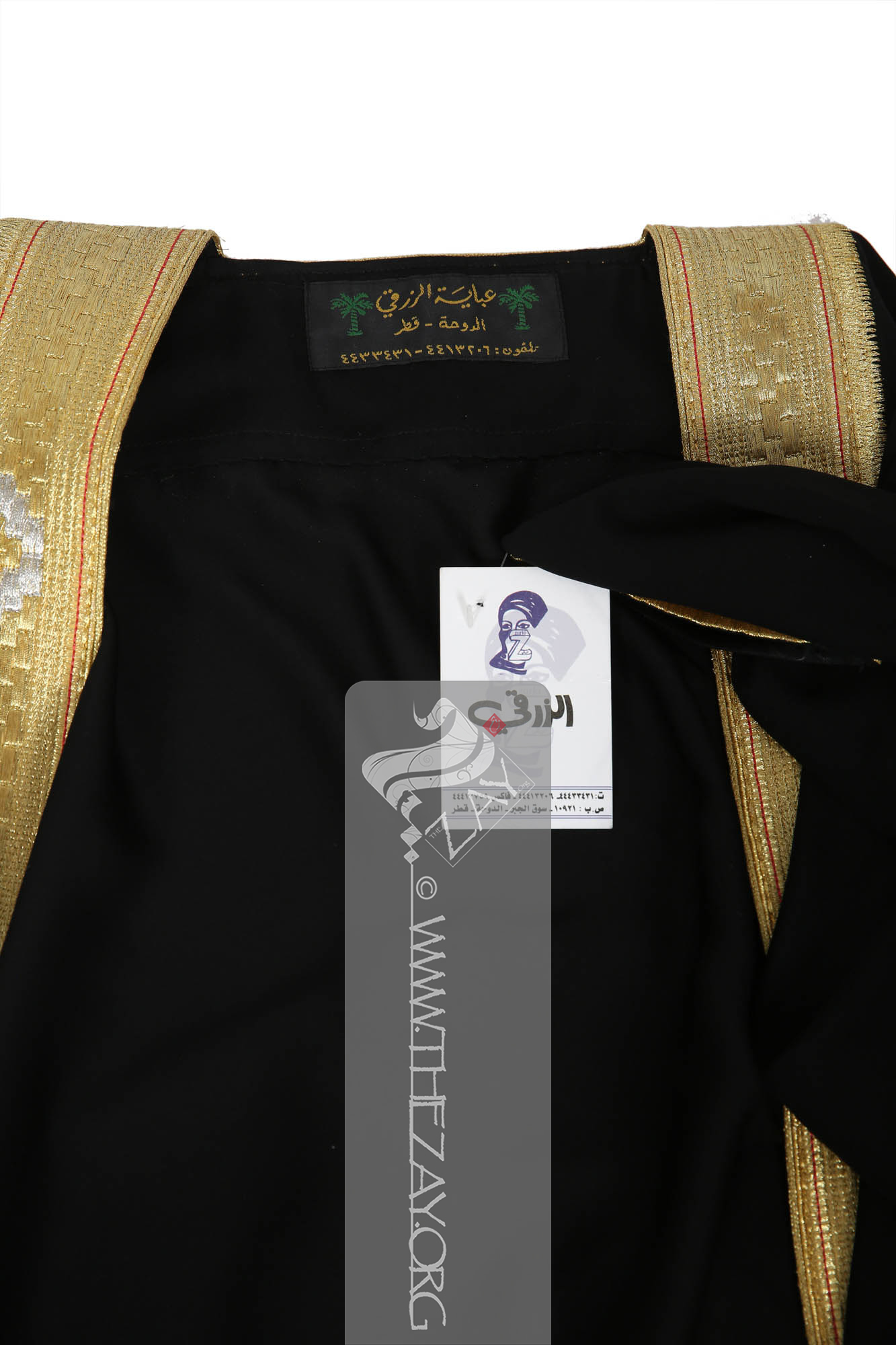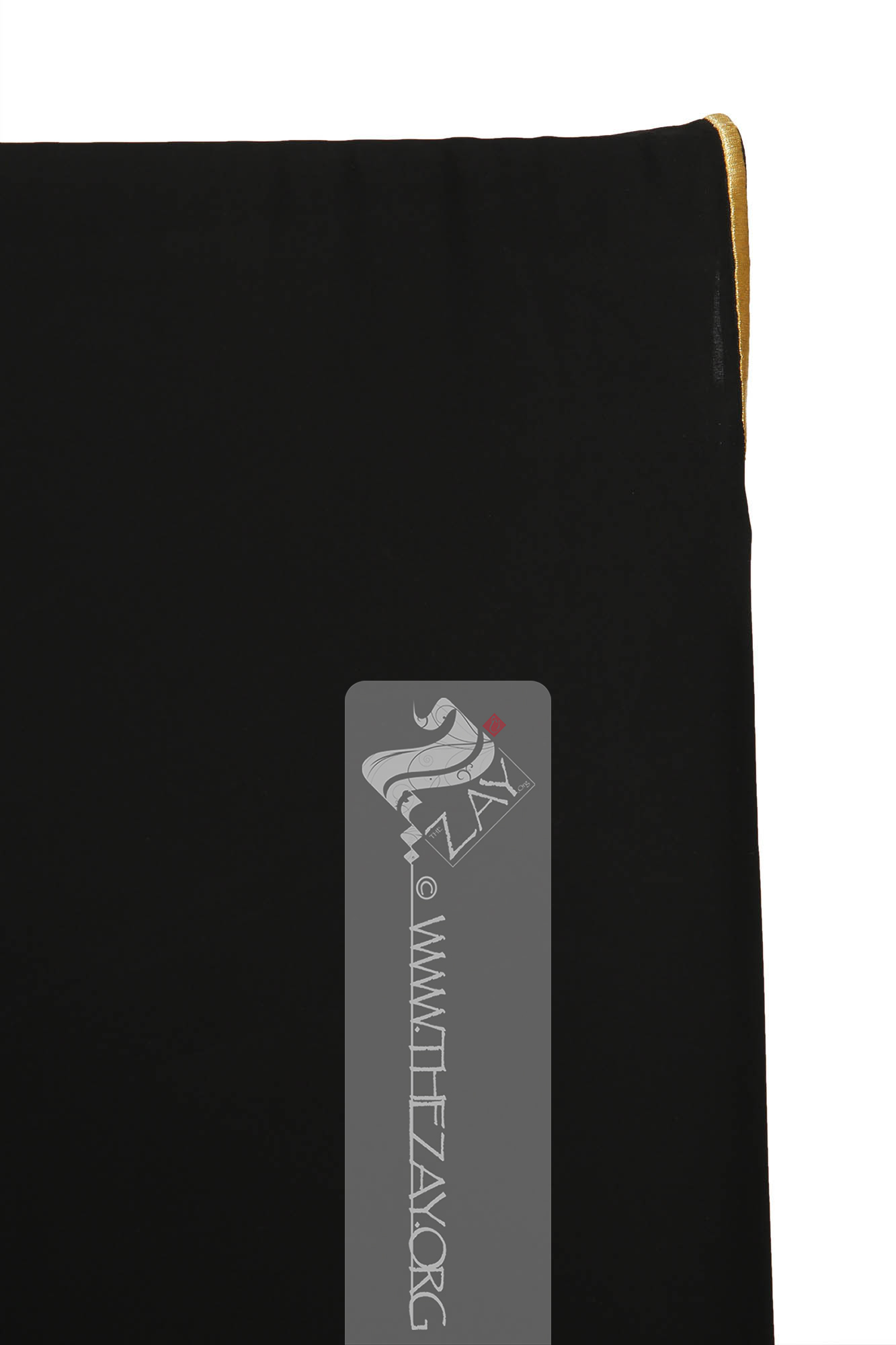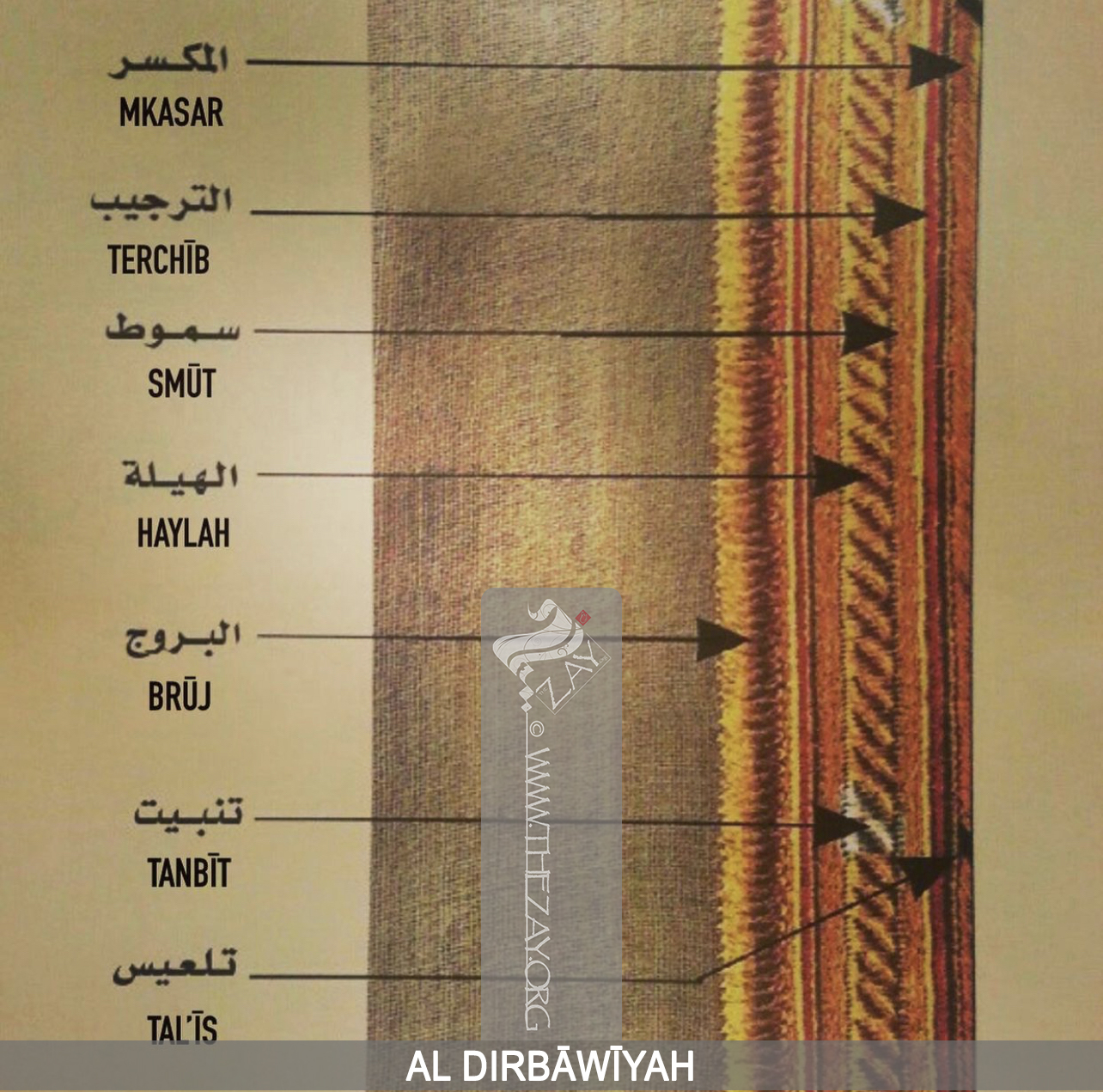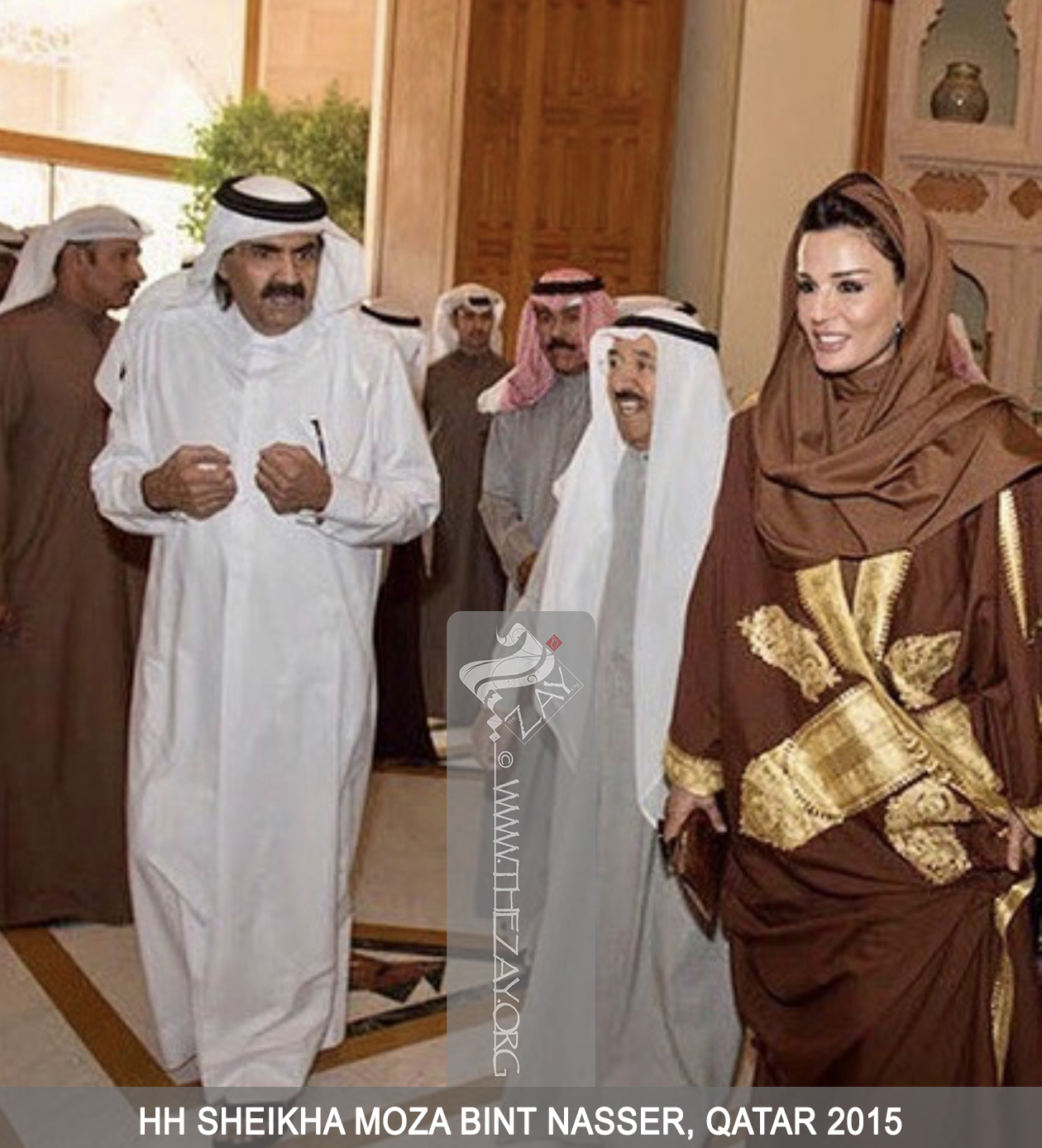| Local Name | Abayah, dafah um_smichah |
| Object Category | Cloak |
| Gender | Female |
| Date of object | Circa 2018 |
| Place Of orgin | Qatar |
| Region | Qatar |
| Object Range | Qatar, Bahrain |
| Dimensions | Length: 165cm Width: 162cm |
| Materials | Silk |
| Technique | Hand Embroidered Machine Embroidered Machine Stitched |
| Color | |
| Motif | Arabesque Floral Geometric |
| Provenance | Purchased, Al Zarqi store, Suq Al Jabir, Doha, 2018 |
| Location | The Zay
Zay: (Arabic: costume, Pl. azyaā’), a set of clothes in a style typical of a particular country or historical period. Initiative |
| Status | In storage |
| ZI number | ZI2018.50075 QATAR |




